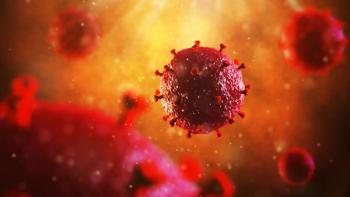
Vibiriosis Outbreak Prompts FDA Raw Oyster Warning
ROCKVILLE, Md. -- Raw oyster harvested from a bed off the coast of Washington State have been linked to six reports of Vibrio parahaemolyticus illness, prompting an FDA warning.
ROCKVILLE, Md., Aug. 10 -- Eating raw oysters harvested from a bed off the coast of Washington State have been linked to six reports of vibriosis, prompting an FDA warning to consumers.
The agency cautioned against eating raw oysters harvested from the southern tip of Hood Canal, which apparently led to the Vibrio parahaemolyticus infections in Washington State and California.
In addition to Washington and California, records indicate that raw oysters from the area were distributed to British Columbia, Florida, Hawaii, Idaho, New York, Oregon, Hong Kong, Malaysia, and Singapore.
Symptoms include watery diarrhea, abdominal cramping, nausea, vomiting, fever, and chills. Usually the symptoms occur within 24 hours of ingestion and last no more than three days, said the FDA.
Severe disease is rare and occurs most commonly in people with weakened immune systems. The FDA said that those with weakened immune systems, including those affected by AIDS, chronic alcohol abuse, liver, stomach, or blood disorders, cancer, diabetes, or kidney disease, should avoid eating raw oysters, regardless of where they are harvested.
The Washington State Department of Health has closed the growing area associated with the illness and has asked commercial oyster harvesters and dealers who obtained oysters from this area to recall them.
The warning extends only to raw oysters. The FDA said consumers could continue to eat properly cooked oysters.
The FDA made these recommendations for purchasing and preparing oysters:
- Purchase oysters with the shells closed; throw away any oysters with shells already opened.
- Never allow raw seafood to come into contact with cooked food.
- Boil oysters until the shells open and then boil for an additional three to five minutes.
- When steaming oysters use smaller pots with fewer oysters. Using large pots or steaming too many at once may cause uneven heat distribution, which may result in some oysters being under-cooked.
- Discard any oysters that do not open when cooked.
- Boil or simmer shucked oysters for at least three minutes or until the edges curl.
- Fry oysters at 375 F for at least three minutes.
- Broil three inches from heat for at least three minutes.
- Bake at 450 F for at least 10 minutes.
Newsletter
Enhance your clinical practice with the Patient Care newsletter, offering the latest evidence-based guidelines, diagnostic insights, and treatment strategies for primary care physicians.



















































































































































































































































































